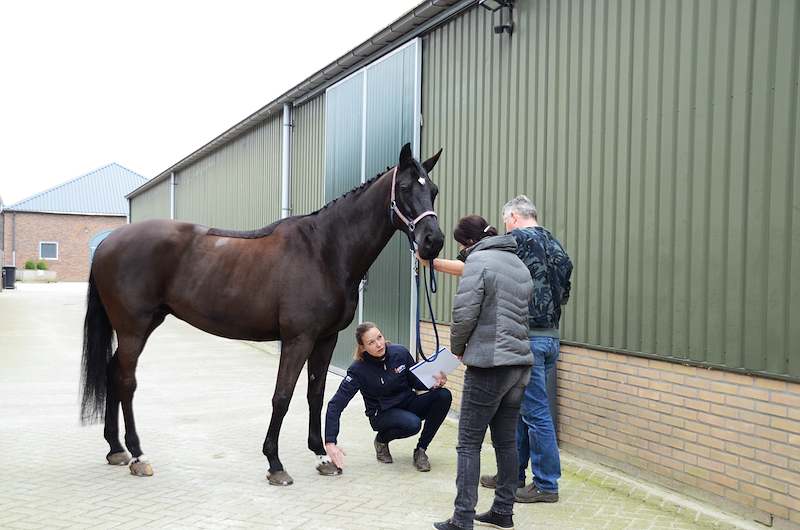Leg Conformation
The KWPN pays close attention to correct conformation, which allows the horse to do its work easily and, as a result, enjoy a long sport career. Correct leg conformation is an important part of this concept. Together with Dr. Harold Brommer of the University Clinic for Horses in Utrecht and KWPN inspectors Floor Dröge and Henk Dirksen, we once again shine a light on this subject.
When a horse is presented at an inspection, the jury first evaluates its stance and conformation. By viewing it from both the side and the front, they can observe the various leg angles. The evaluation of the front legs begins with an assessment of the horse’s stance relative to its body. Senior dressage inspector Floor Dröge explains: “The front leg should stand straight under the body. This way, the horse can easily bring the leg forward and develop scope in the stride. However, the leg in some horses is positioned slightly under the body, which we call ‘camped under’. This need not be a problem, but you can see it in the movement sequence: the horse can’t bring its leg forward as easily and doesn’t have as much shoulder freedom. Senior jumper inspector Henk Dirksen also sees this issue in show jumpers: “You often see that these horses jump slightly over the front leg, which comes at the expense of the front leg technique.” However, this issue does not have veterinary significance.
Next, the jury draws an imaginary straight line through the front leg. Dröge: “We then look if the leg is over- or back-at-the-knee. We don’t consider a bit of either bad, but never too much! We regularly see horses that are fairly back-at-the-knee, in which the knee is positioned behind the plumb line and relatively overstretched. We hear from practice that this regularly leads to accelerated wear and tear.” Veterinarian Harold Brommer: “You’d think that this has an effect on the pressure on the structures on the back of the leg, like the tendons, navicular and various ligaments. But we’ve never seen proof of this. With an over-at-the-knee front leg, the imaginary line from the elbow through the forearm and cannon bone is broken forward in the knee. If it’s this way by nature, it’s not pretty but has little significance.” “But it’s a different story if a horse develops an over-at-the-knee stance over time. I see this with some regularity. Then they sometimes buckle over a bit. This mostly occurs because there’s a problem somewhere in the front leg or higher. For example, it can be in the shoulder, the neck or they unload the back half of the hoof. So, if you have a horse that develops an over-at-the-knee stance over time, it’s important to be alert that something may be wrong.” Dirksen: “In show jumpers, we sometimes see horses with an over-at-the-knee front leg. It certainly doesn’t put them at a disadvantage: they use their knees better and, as a result, seem to have less wear and tear.” Over-at-the-knee conformation is rare in dressage horses.























 KWPN Database
KWPN Database KWPN.tv
KWPN.tv KWPN Horses for Sale
KWPN Horses for Sale